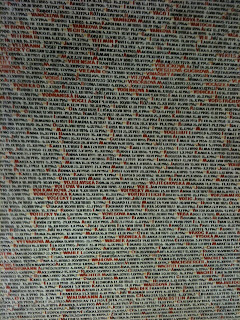If you ever wanted to walk through a fairy tale city then Prague is the place to go. Home to the world's largest castle, Prague Castle which took 700 years to complete and is like a whole town in and of itself. The castle was the seat of countless princes, kings and emperors and is now the seat of the modern Czech government. The city was founded in the 9th century and in the 14th century the city really came into it's own thanks to Charles IV, the Holy Roman Emperor. King Charles turned Prague into the imperial capital even refusing the Catholic Church's request to move the capital to Rome. He is responsible for building Pragues most famous landmarks like Charles University (oldest university in East Europe), The Charles Bridge, Charles Square and much of the mega huge Cathedral of Saint Vitus in the castle area which overlooks the whole city in impressive panoramic view. A short stroll down from the castle and over the Charles Bridge will lead you right into the eye catching Prague town square. The main attraction of the town square is the famous Astronomical clock (the 3rd oldest in the world and the only one from that era that still works). The clock shows positions of The Sun, moon, major planets and even has moving parts like a figure of Death (represented by a skeleton) that strikes the bell each hour.
Another fascinating part of the city is the Jewish Quarter (a neighborhood now called Josefov) which is remarkably preserved including the oldest synagogue in Europe that is still in service which is called the Old New Synagogue built in 1260 and is one of Prague's first gothic buildings. There are six synagogues in the city, the old cemetery, and the Old Jewish Town Hall (now all part of the Jewish Museum in Prague and described below). With the Nazi occupation of WWII it could have been expected to be completely destroyed but the area was preserved in order to provide a site for a planned "exotic museum of the extinct Jewish race". The Nazis gathered Jewish artifacts that they stole from their victims from all over Europe for display in Prague so ironically they are responsible for leaving the Jewish buildings untouched here. The 15th century Pinkas Synagogue alongside the Old Jewish Cemetery is famous for being the world's first Holocaust Museum and memorial started in 1954. The names of the 77,297 Jewish Czechoslovak victims of the Nazis were written on the synagogue’s walls to keep forever the names of the Jews who were murdered. Prague is a must do city to visit next time you find yourself in Europe, it is easy to get to and full of stuff to do and visit, I loved it.
Photos of Prague
Town Square of Prague
Walking into the town square
Town square beauty
Some red ear capped horses in town square
The Astronomical Clock
A closer look at the clock
On Charles Bridge a beautiful crucifix with Hebrew script,
the word on the very top means "holy".
The good luck statue on Charles Bridge, people stand in long lines to rub the figure of a dog on the left and the woman on the right. The rubbing is what keeps those parts of the plaques so shiny.
The Old Castle
Viewpoint from the castle-top
The Jerusalem or Jubilee Synagogue from 1906
in both moorish and art nouveau
A plaque of Franz Kafka, Prague's Jewish literary giant considered one of the most important writers of the twentieth century who started the modern style of writing.
Maisel Synagogue in Josefov
A wall with the inscribed Czech Jewish victims in the Pinkas Synagogue
A tombstone in the Old Jewish Cemetary
Crowded Old Jewish cemetery with 12,000 tombstones all piled on top of each other due to lack of space and inability to expand beyond the ghetto's limited space. There is believed to be 100,000 people in buried on top of each other in 12 layers of dead.
Cobblestone cemetery floor
Jewish Town hall with 2 clocks, one a normal clock and the other a clock in
Hebrew letters and goes counter clockwise
Prague's Jews were required in the middle ages to wear a ridiculous yellow cap to identify to others that they were Jews. This Jew's hat was then adopted as a sign of pride instead of shame and is used throughout the community still.
Back of Old New Synagogue with ladder to the attic in
which the legendary Golem is supposed to live.
The Golem story is very famous and you can see the figure
in mosaic at the restaurant of the same name.
in mosaic at the restaurant of the same name.

























No comments:
Post a Comment